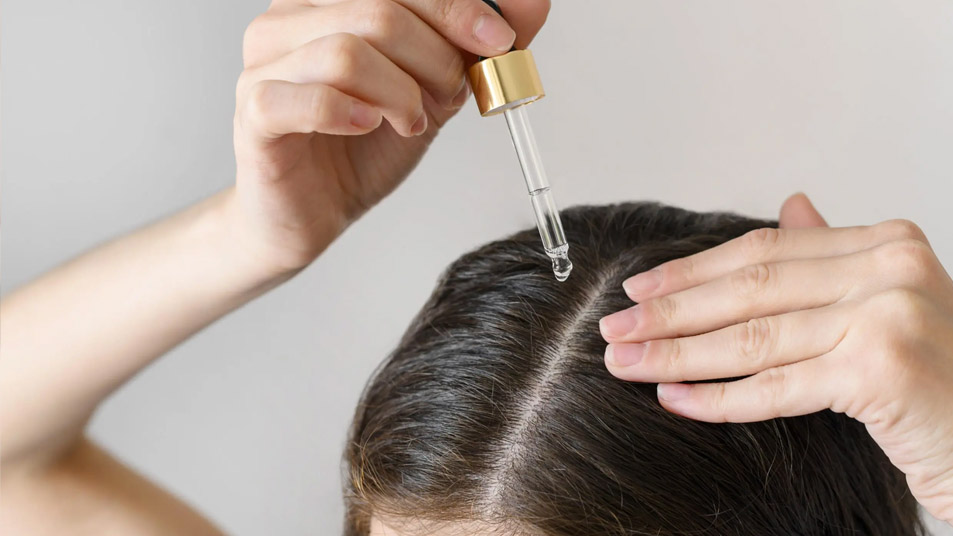
Hair Transplant, also called Hair Restoration or Hair Replacement, is a surgical procedure used to treat hair
loss or thinning hair. It involves moving hair follicles from one part of the body (usually the back or sides of the
scalp, called the donor area) to another area with thinning or no hair (the recipient area). This procedure is
commonly used to address conditions like male or female pattern baldness, hairline recession, or thinning hair
due to injury or scarring. Dermatologists (healthcare providers specializing in the skin) or plastic surgeons
(healthcare providers specializing in reconstructive procedures) perform hair transplants.
Hair Transplants techniques :
There are two main techniques:
Follicular Unit Transplantation (FUT) :
A strip of skin with hair is removed from the donor area. The strip is divided into smaller grafts containing
individual hair follicles. These grafts are transplanted to the recipient area. Leaves a linear scar in the
donor area.
Follicular Unit Extraction (FUE) :
Individual hair follicles are extracted directly from the donor area using a small punch tool. The follicles are
transplanted to the recipient area. Scarring is minimal and often less noticeable than FUT.
Ideal Candidates for Hair Transplants
People with stable hair loss patterns.
Those with sufficient donor hair available.
Individuals in good general health (as surgery involves recovery).
Types Of Hair Transplant Surgery :
There are several different ways to perform hair transplant surgery like
Grafting, Scalp reduction, Flap surgery, Tissue expansion.
Grafting :
For hair transplant surgery, hair grafting is the most popular procedure. A medical professional trims little
portions of the healthy hair-bearing scalp. In such cases, they remove skin with 10 to 15 hairs using a tiny,
round punch. These grafts were once referred to as "hair plugs" by some. In micro-grafts, one or two hairs
are present. It may take many hours to complete. During the procedure, most patients remain conscious,
although they are given medicine to make their scalps numb. If your provider needs to relocate a lot of
hair, you could require many operations. Between operations, your scalp must recuperate for a few
months.
Scalp reduction :
Another name for scalp reduction is alopecia reduction, according to providers. A little patch of bald skin is
removed from the scalp by the surgeon during this surgery. They draw the surrounding hair-containing skin
over the bald spot after loosening it. They sew it in place after that. For bald spots on the top and rear of the
head, scalp reduction is perfect. Usually, skin with hair surrounds these areas. In order to attain complete
covering, physicians may combine hair implants with scalp reduction. Similar to grafting, scalp reduction
typically just calls for the use of numbing drugs. This implies that general anesthesia is not necessary.
Flap surgery :
If you have significant bald spots close to the front of your head, your surgeon could suggest flap surgery. Over
the course of a few weeks, flap surgery is done in stages. The donor location is sliced superficially on three
sides by the surgeon. The original blood supply is maintained by the fourth side, which is still linked. The
surgeon can cut the flap and elevate it over bald spots with the aid of this procedure. General anesthesia is
necessary for flap surgery.
Tissue expansion :
Your doctor could do tissue expansion surgery if you have burn-related deformity or scalp baldness. General
anesthesia is necessary for tissue expansion, which is a multi-step process:
Where hair is still present, a reconstructive surgeon places an implant beneath the scalp. They refer to it as a tissue expander because of its balloon-like shape.
To extend the skin, the expander is progressively inflated over a few weeks.
A second treatment is carried out by the surgeon to apply stretched skin over the bald region.
Steps of Hair Transplants :
Pre-Procedure Preparation :
A doctor evaluates the patient's scalp, discusses expectations, and determines the suitability for a
transplant. The hairline or area to be transplanted is marked. Blood tests or other evaluations may be
done to ensure the patient is fit for surgery. Patients are advised to avoid certain medications, alcohol,
or smoking before the procedure.
Risks and Considerations
Scarring (minimal in FUE).
Temporary shedding of transplanted hair before regrowth (shock loss).
Infection or bleeding.
Unsatisfactory aesthetic results if not done properly.
Cost (can be expensive depending on the clinic and number of grafts).
Post-Transplant Care :
Avoid strenuous activities for a few days.
Keep the scalp clean and follow surgeon-recommended shampoos or medications.
Avoid direct sunlight on the scalp initially.
Recovery process after Hair Transplant surgery :
Since the majority of hair transplant procedures are outpatient, you can return home the same day as the
treatment. The type of transplant you get will affect how you recover. In the days following surgery, you can
be capable of :
Day 1 : Take off the bandages.
Day 2 : Give your hair a wash.
Days 3 to 5 : Get back to work and begin doing light work.
After 10 days : Your healthcare professional will remove the sutures.
After 3 weeks : Resume your sports or fitness routine.
It can take up to a year before you see the full results of any hair transplant. The transplanted hair may fall out
as the graft or flap heals. This is normal. The hair should grow back. You may need several “touch-up” hair
transplant surgeries to achieve a natural-looking result.
When to seek help of the Derma surgeon?
Following surgery, it's possible that the patient may see the doctor on many occasions. They will ensure the
proper healing of your scalp. However, if you encounter any of the following issues, get in touch with your
provider immediately:
A persistently high temperature.
Prolonged bleeding from the scalp.
Excruciating scalp pain or redness.
Indications of infection, including yellow or green pus seeping from your scalp wounds.
NOTE : Hair transplant surgery can be a viable choice as an alternative hair growth therapies if proved
ineffective for you. Numerous hair transplantation procedures exist. Therefore, choosing the method that will
best achieve your aims requires collaboration with a healthcare expert. Seek out an expert who has dealt with
hair loss and hair restoration.
